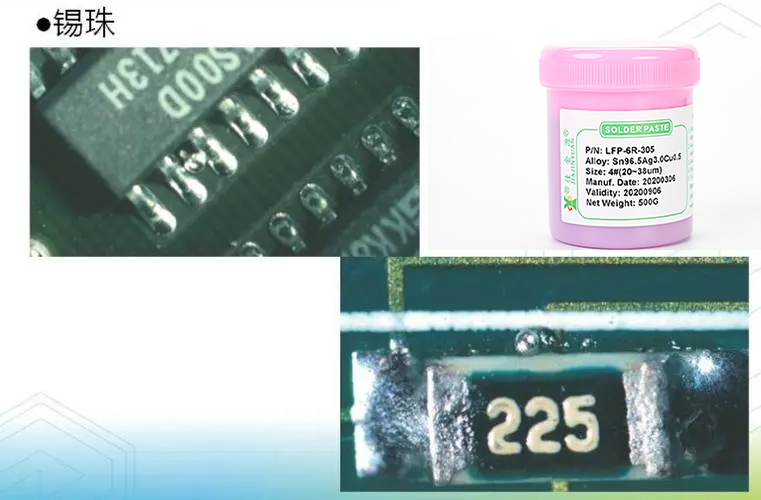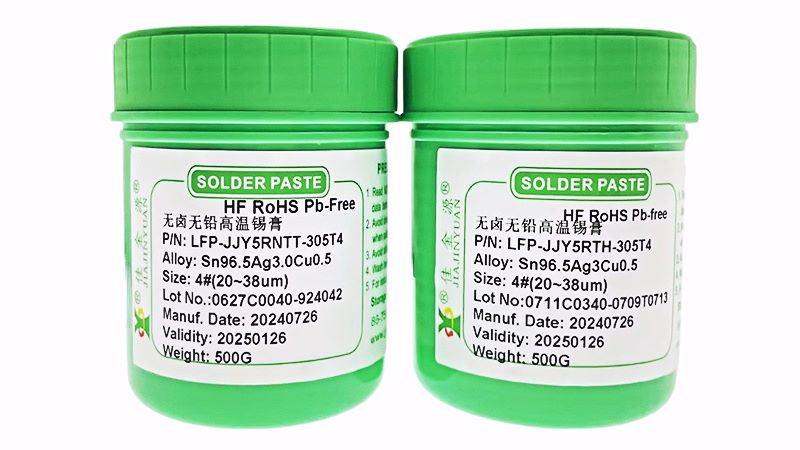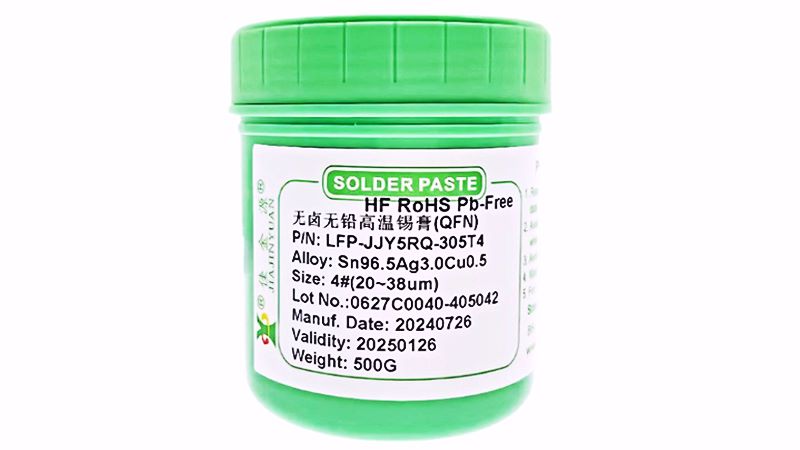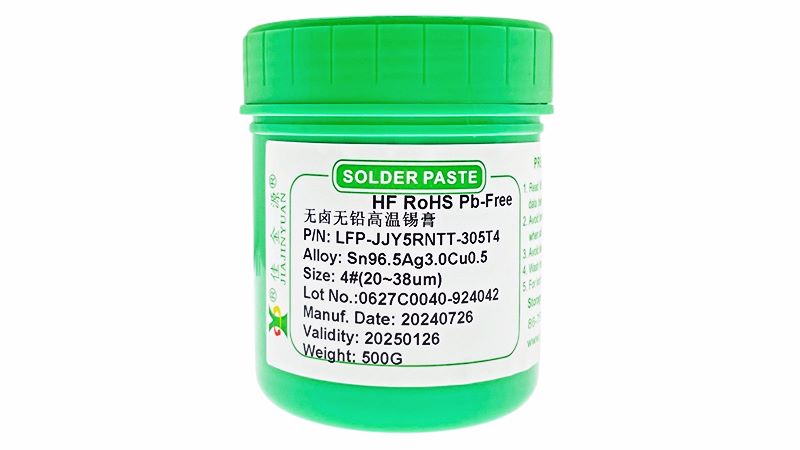SometimesSMTTin beads will be produced during processing, which is a sign of poor processing. Generally, such plates cannot pass the appearance quality inspection. It should be of high qualitySMTAll these quality issues need to be addressed. Before solving them, we must first know the reasons for their occurrence. The following is JJYSolder paste manufacturerLet me briefly analyze the reasons for the appearance of tin beads for everyone:

One: Solder paste
1Metal content
GenerallySMTThe mass ratio of metal content in solder paste during surface mount technology (SMT) processing is approximately88%~92%The volume ratio is approximately50%. If the metal content increases, the metal powder can be arranged closely, and it will be easier to combine during melting without being blown apart, thus making it less likely to produce solder beads.
2Oxidation degree of metal powder
The higher the oxidation degree of the metal powder in the solder paste, the greater the resistance to the bonding of the metal powder during soldering. As a result, it is not easy for the solder paste to wet the pad and components, which leads to a decrease in solderability.
3Size of metal powder
The smaller the metal powder in the solder paste is, the larger the overall surface area of the solder paste will be, which leads to a higher degree of oxidation of the finer powder and thus intensifies the phenomenon of solder beads.
4Flux and fluxes
If there is too much flux, it is very likely that local collapse will occur, making it easy for solder beads to form. If the activity of the flux is too weak, its ability to remove oxidation will also be weak, and it is also easy to produce solder beads.
5Others
After the solder paste is taken out of the refrigerator and opened for use without being warmed up, the solder paste absorbs moisture. During preheating, the solder paste splashes and forms solder beads. Moisture in printed circuit boards, excessively high indoor humidity, wind blowing directly on solder paste, excessive addition of thinner to solder paste, and prolonged machine stirring can all promote the formation of solder beads.
Ii. Steel mesh
When opening the steel mesh, if it is done according to the size of the solder pads, it is easy to print solder paste onto the solder mask layer, thus causingSMTSolder beads are produced during surface mount reflow soldering, so they can be slightly smaller. The thickness of steel mesh is generally0.12mm~0.17mmBetween them, if it is too thick, it will cause the solder paste to collapse.
Iii.SMTSurface mount pressure
inSMTDuring the surface mount technology (SMT) process, if the pressure is too high, it is very easy to squeeze the solder paste onto the solder mask layer below, and then in reflow soldering, solder beads will form around the components.
Iv. Furnace Temperature Curve
Solder beads are usually produced during reflow soldering. If the temperature rises too fast during the preheating stage of reflow soldering, it is very likely to cause solder to splash and produce solder beads.
The above content about the appearance of solder beads is explained by Shenzhen JJY Solder Paste Manufacturer. If you want to know more about solder paste products, please follow and interact with us.





 Tel:+86 0755 88366766
Tel:+86 0755 88366766 Phone:+86 18938660310
Phone:+86 18938660310 Email:sales@jjyhanxi.com
Email:sales@jjyhanxi.com Address:13/F,12/F, Building No. B,Qinghu Technology Park,Qingxiang Rd.,Qinghu Community, Longhua Subdistrict,Longhua District,Shenzhen City,GUANGDONG Province,P.R.C.(518027)
Address:13/F,12/F, Building No. B,Qinghu Technology Park,Qingxiang Rd.,Qinghu Community, Longhua Subdistrict,Longhua District,Shenzhen City,GUANGDONG Province,P.R.C.(518027) Guangdong Public Security Backup 44030902002666 name
Guangdong Public Security Backup 44030902002666 name
 WeChat
WeChat WeChat official account
WeChat official account
